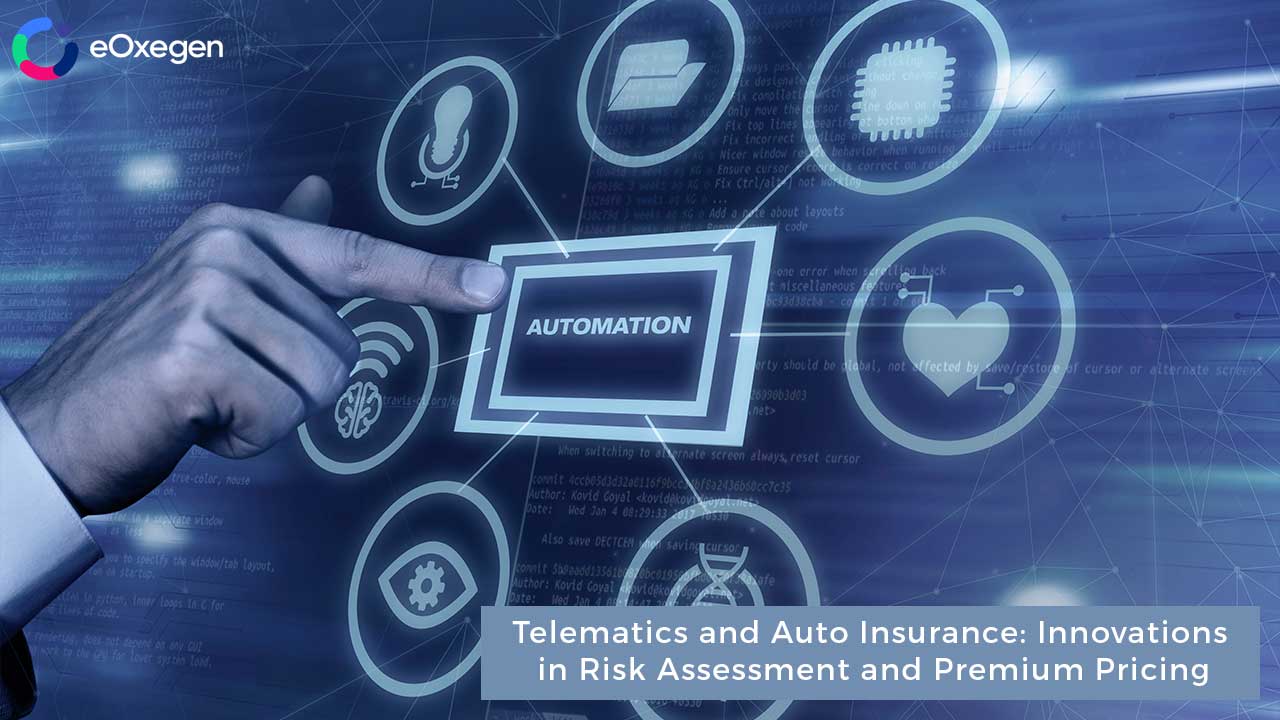Telematics and Auto Insurance: Innovations in Risk Assessment and Premium Pricing
13th August, 2023

Auto insurance has always been an essential aspect of vehicle ownership. In the past, insurers would determine insurance premiums based on factors such as age, gender, and driving history. However, with the advancement of technology, auto insurance companies are now using telematics devices to assess risk and price premiums.Telematics has become a buzzword in the auto insurance industry due to its potential to revolutionize the way risk is assessed and premiums are priced. Let’s explore the role of telematics in the auto insurance industry and its impact on drivers and insurance companies.
Overview of Telematics
Telematics is a technology that combines telecommunications and informatics. It refers to the use of devices that collect and transmit data wirelessly. In the auto insurance industry, telematics devices are used to track and analyze driving behavior to determine insurance premiums. Telematics devices can be installed in vehicles, and they collect data such as speed, braking, acceleration, and distance traveled.
There are various types of telematics devices, including plug-in devices, built-in devices, and mobile apps. Plug-in devices are the most common, and they are installed in the vehicle's OBD-II port. Built-in devices are integrated into the vehicle's system during manufacturing, while mobile apps use the smartphone's sensors to collect driving data.
Telematics and Risk Assessment
Telematics devices collect a vast amount of data on driving behavior, such as speed, acceleration, braking, and distance traveled. This data is then analyzed to assess the driver's risk profile. By using telematics devices, insurers can get a more accurate picture of the driver's risk and adjust insurance premiums accordingly.
The data collected by telematics devices is also used to identify areas where the driver can improve their driving behavior. For example, if a driver is accelerating and braking harshly, the insurer can provide feedback to help the driver improve their driving behavior, reducing the likelihood of an accident.
Using telematics for risk assessment has several benefits. First, it provides a more accurate assessment of the driver's risk profile, resulting in fairer insurance premiums. Second, it encourages safe driving behavior, reducing the likelihood of accidents and insurance claims. Finally, it provides insurers with data to identify and address high-risk areas, such as dangerous intersections or road conditions.
Telematics and Premium Pricing
Telematics devices are used to price insurance premiums based on the driver's risk profile. Insurers use the data collected by telematics devices to assess the driver's risk and adjust premiums accordingly. For example, a driver who frequently speeds or brakes harshly may be considered a higher risk and charged a higher insurance premium.
Telematics-based premium pricing has several advantages. First, it encourages safe driving behavior by rewarding drivers who exhibit safe driving behavior with lower insurance premiums. Second, it provides a more accurate assessment of the driver's risk profile, resulting in fairer insurance premiums. However, telematics-based premium pricing also has some disadvantages. It can be seen as intrusive, as telematics devices track the driver's every move. Additionally, drivers may feel that they are being penalized for their driving behavior, leading to reduced trust in the insurance industry.
Innovations in Telematics and Auto Insurance
The auto insurance industry is constantly evolving, and there have been several recent innovations in telematics and auto insurance. Most significant innovations include:
-
Artificial intelligence (AI) and machine learning are being used to analyze driving behavior. Insurers can use AI to identify patterns in driving behavior and offer personalized feedback to drivers. They can also adjust premiums based on the data collected by telematics devices.
-
Blockchain technology is being used to store and share driving data securely. Blockchain technology can help prevent fraud and ensure that the data collected by telematics devices is tamper-proof.
-
Usage-based insurance (UBI) is being offered by some insurers. UBI is a type of insurance where the premium is based on the number of miles driven. This encourages drivers to drive less, which reduces their risk of getting into an accident and can save them money on insurance premiums.
The impact of these innovations on the industry and customers is significant. Customers are now more informed about their driving behavior, and insurers are providing personalized feedback and adjusting premiums accordingly. The industry is becoming more competitive, with insurers offering different telematics-based insurance products to appeal to different customers.
Potential Challenges and Concerns
While telematics-based auto insurance has many benefits, there are also potential challenges and concerns. One significant concern is privacy and data security. Telematics devices collect sensitive data about the driver's behavior, and there is a risk that this data could be hacked or used for nefarious purposes.
Another concern is the potential for bias or discrimination in telematics-based risk assessment and premium pricing. Insurers must ensure that their telematics devices and algorithms are free from bias and that they do not unfairly discriminate against certain drivers.
Conclusion
Telematics devices are revolutionizing the auto insurance industry. They provide insurers with more accurate data to assess risk and price premiums, encourage safe driving behavior, and provide personalized feedback to drivers. However, there are also potential challenges and concerns that insurers must address to ensure that telematics-based auto insurance is fair and secure. It is crucial for the industry to continue innovating and developing new technologies to address these concerns and provide better services to customers. If you're considering telematics-based auto insurance, make sure you research the product thoroughly and understand the potential benefits and risks.
Recent Articles
- How do Big Insurers Engage with the New-Age InsurTech Companies?
- Insurance Management System Integration: Maximizing Efficiency and Performance
- Will Blockchain Technology Reshape the Insurance Market?
- The Future of Health Insurance: Predictive Analytics and AI
- Buy or Build Insurance Software? A Game-Changing Question in Insurance Industry